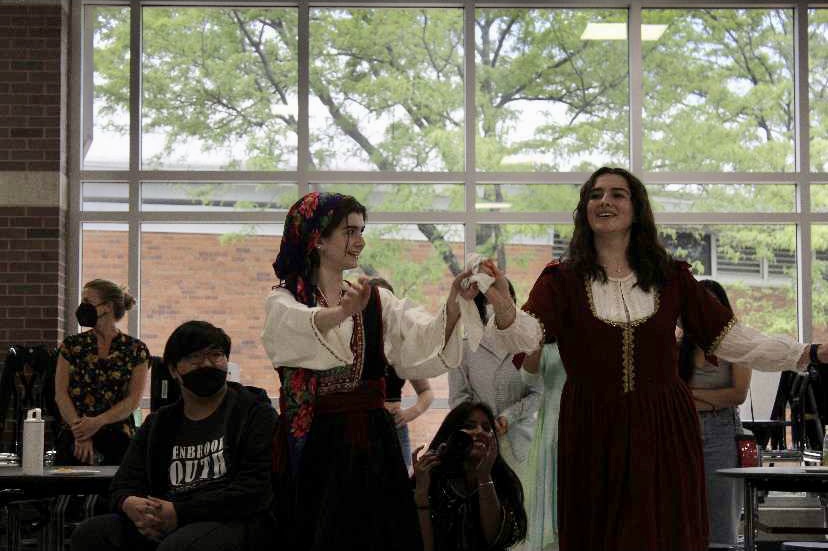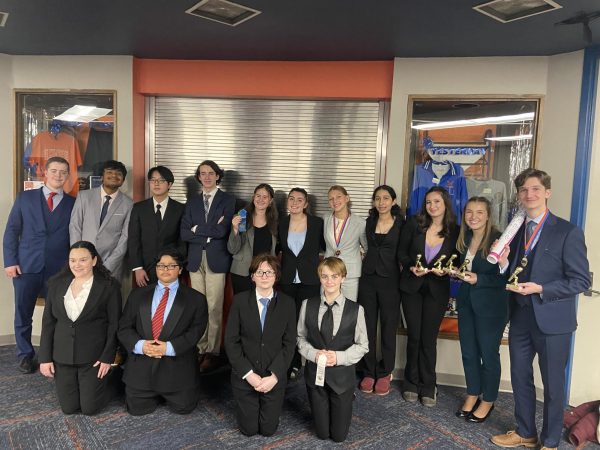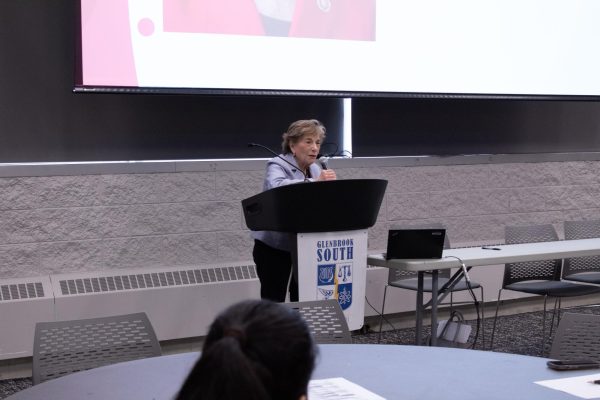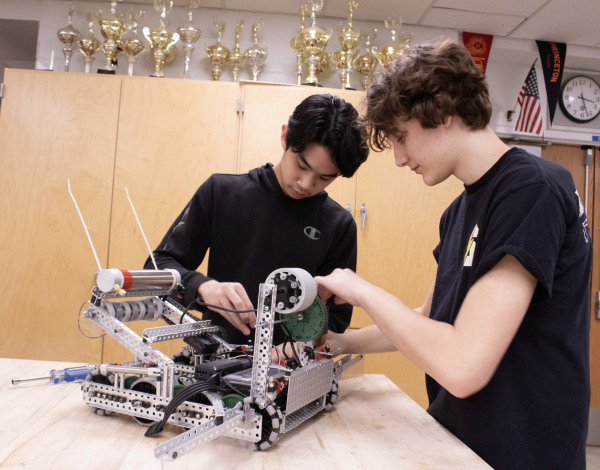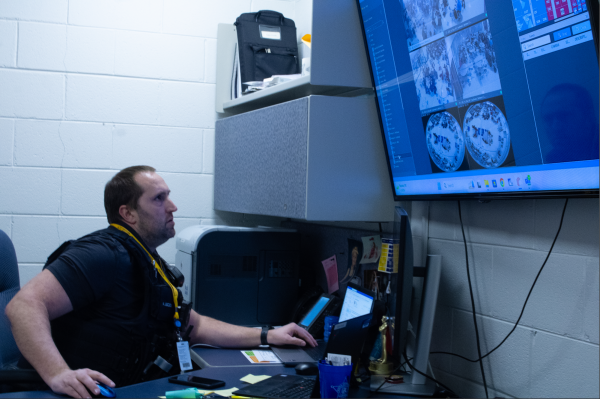Cultural Night: Around the world in the Autos Courtyard
Dazzling Dancers: Juniors Julie Antonoglu and Melissa Mellos perform Kalamatiano, a Greek dance traditionally performed in Greek social gatherings around the world, in the west cafeteria. Photo courtesy of Sofia Oyarzun
May 19, 2022
Cultural music filled the air while people ate, danced, and played traditional games in the Autos Courtyard during Cultural Night on May 17, Emily Ekstrand, Students Organized Against Racism (SOAR) Sponsor and Social Studies Teacher said.
There have been other Cultural Nights in the past, but this year was the first time SOAR hosted the event, Ekstrand added. Organized by SOAR, students from South’s cultural clubs set up individual booths to educate others about their culture, sophomore Adhwaita Roshan-Nair, SOAR member, said.
“[SOAR was in] charge of keeping in contact with all the clubs, informing them on what they were supposed to bring like food and different games,” Roshan-Nair said. “[We] also [organized] different dance groups like Bhangra Beatz and Latino Heats to make sure they [got] a chance to perform.”
Japanese Club attended the event and performed a traditional fisherman dance called Soran Bushi, senior Cole Vondersitt, President of Japanese Club, said.
“The dance depicts certain aspects of fishing,” Vondersitt said. “It is an extremely popular dance that is still done in festivals all over Japan.”
In addition to dancing, Japanese Club sold small, appetizer-like snack food, Vondersitt explained. The food was traditional, but appealed to people of other cultures, Vondersitt said.
“[We sold a] Japanese omelet called Tamagoyaki, which is commonly used for lunch boxes,” Vondersitt said. “Along with the Tamagoyaki, [we had] edamame, a type of Japanese bean, often used as an appetizer.”
Similarly, Korean American Student Association (KASA) bought Korean snacks for Cultural Night, senior Sarah Kim, club leader of KASA, explained. The profit from selling Korean snacks will go towards club funding, Kim said.
“Korean Club [has not] had a special event [this year] so [we were] thinking that we can dedicate [the money for] something special, like a celebration,” Kim said.
Additionally, the event operated on a ticket system, and everyone paid using single tickets, senior Luka Heidari, SOAR member, said. Each club determined the price of their items, therefore prices varied, Heidari added. SOAR later returned the owed money to each club, Roshan-Nair said.
“If you [wanted] to buy food, you [got] a ticket, and one ticket [was] a dollar,” Roshan-Nair said. “At the end of the night, [SOAR paid each club back, depending on the amount of tickets they received].”
Furthermore, the idea of hosting a Cultural Night derived from a SOAR meeting, when students realized there weren’t a lot of inter-club collaborations between the ethnocultural clubs at South, Heidari mentioned. Social media and past experiences specifically inspired the students, Roshan-Nair added.
“[There were] a lot of Cultural Nights in middle school, and I’ve been looking at pictures that I found and thought, ‘If that happened at [South] that would be cool,’” Roshan-Nair said.
Additionally, Cultural Night celebrated the Asian Americans and Pacific Islanders (AAPI) community, which makes up about 13 percent of South’s student population, Kim said.
“[The AAPI community is a] minority, so celebrating its [culture] through food and telling people who we are, and that we exist in this school community [was important],” Kim said.
Furthermore, the event helped bring awareness to the difference between cultural appropriation and cultural appreciation, which has been a problem in recent years, Roshan-Nair explained. Roshen-Nair believed presenting the cultures prevented the spread of cultural appropriation. Therefore, different cultures shared their traditions with others, Roshan-Nair said.
“Different clubs [brought] in their idols, gods, clothing, and traditional games,” Roshan-Nair said. “It [was a] way for students to connect with each other and learn about different cultures.”



